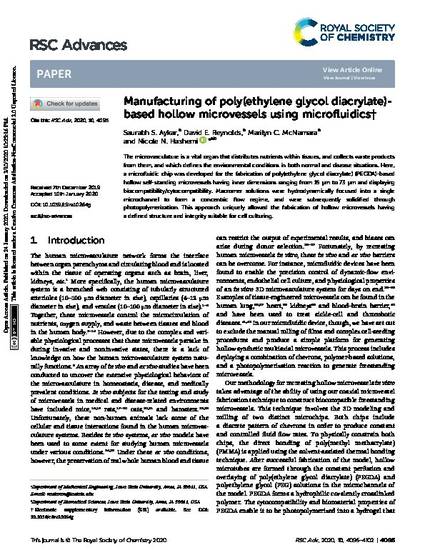
The microvasculature is a vital organ that distributes nutrients within tissues, and collects waste products from them, and which defines the environmental conditions in both normal and disease situations. Here, a microfluidic chip was developed for the fabrication of poly(ethylene glycol diacrylate) (PEGDA)-based hollow self-standing microvessels having inner dimensions ranging from 15 μm to 73 μm and displaying biocompatibility/cytocompatibility. Macromer solutions were hydrodynamically focused into a single microchannel to form a concentric flow regime, and were subsequently solidified through photopolymerization. This approach uniquely allowed the fabrication of hollow microvessels having a defined structure and integrity suitable for cell culturing.
Available at: http://works.bepress.com/nastaran_hashemi/48/

This article is published as Aykar, Saurabh S., David E. Reynolds, Marilyn C. McNamara, and Nicole N. Hashemi. "Manufacturing of poly(ethylene glycol diacrylate)-based hollow microvessels using microfluidics." RSC Advances 10, no. 7 (2020): 4095-4102. DOI: 10.1039/C9RA10264G. Posted with permission.